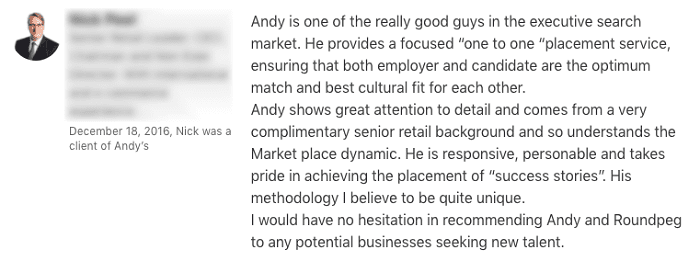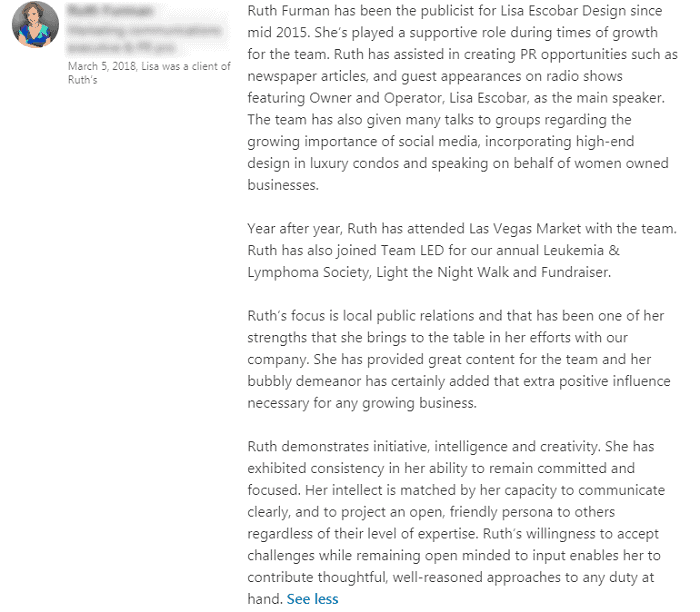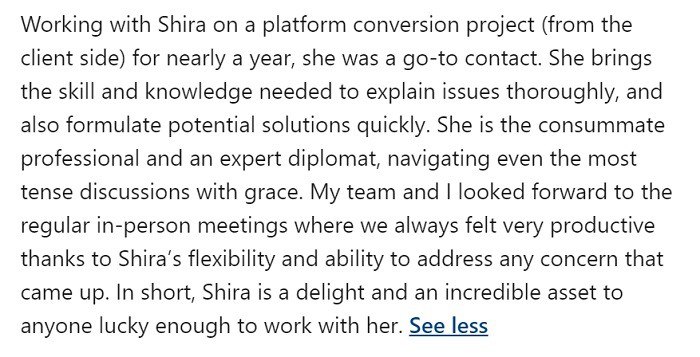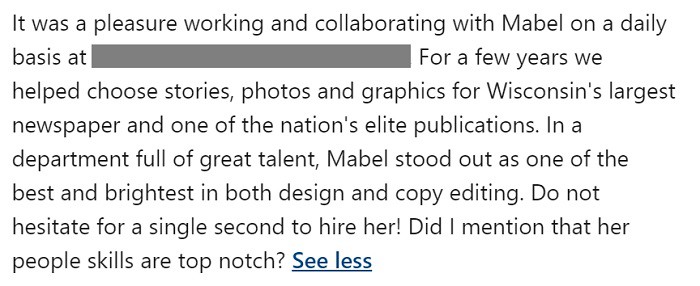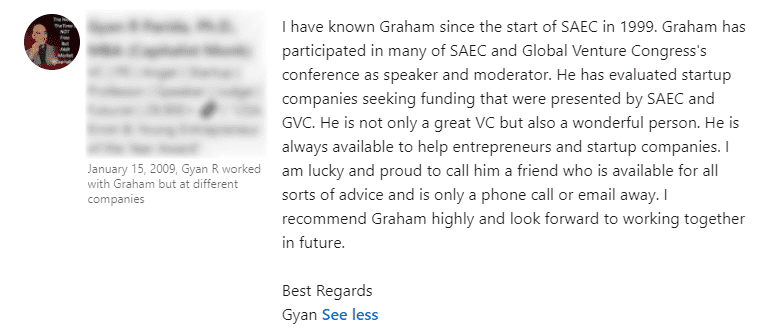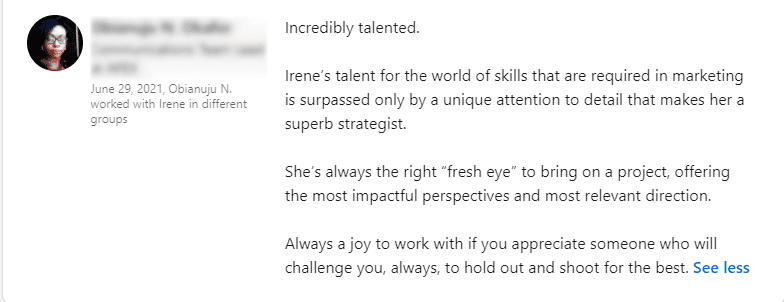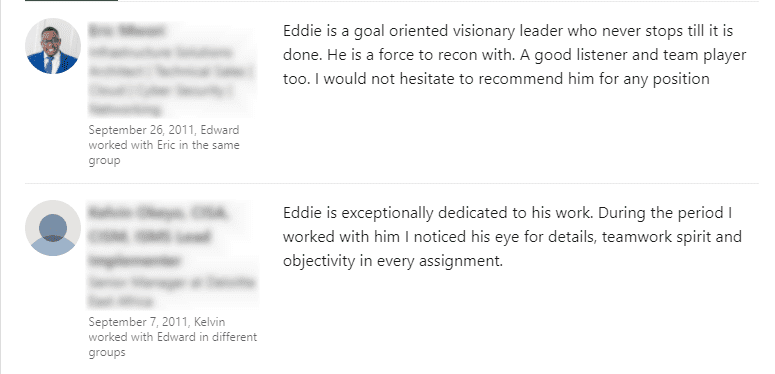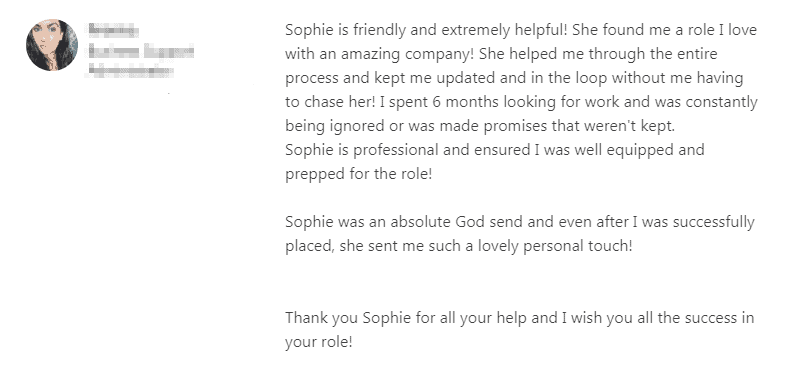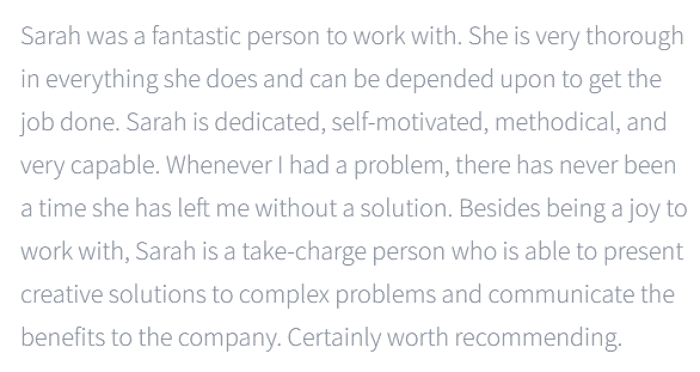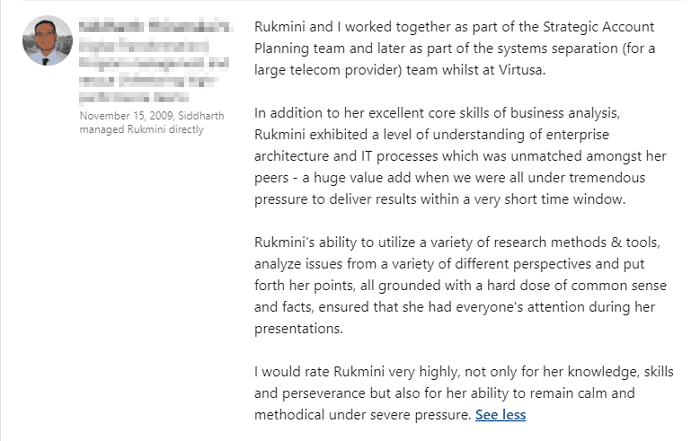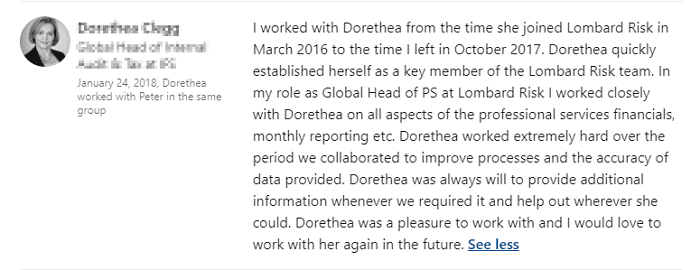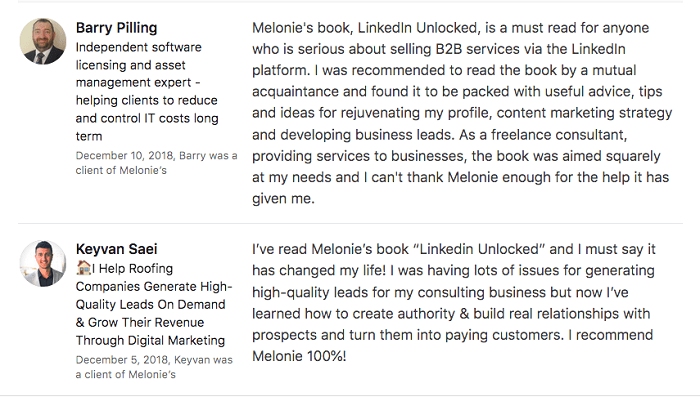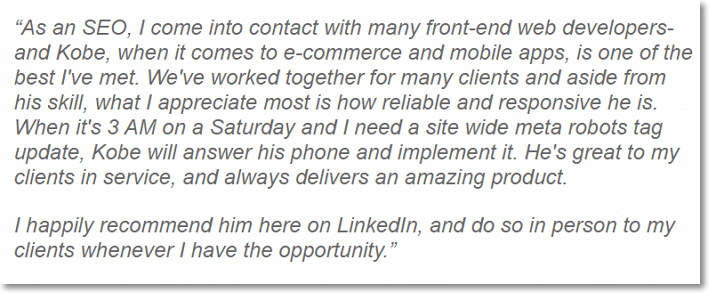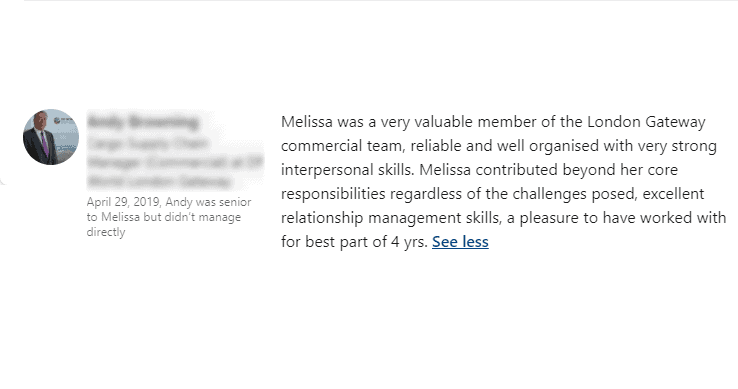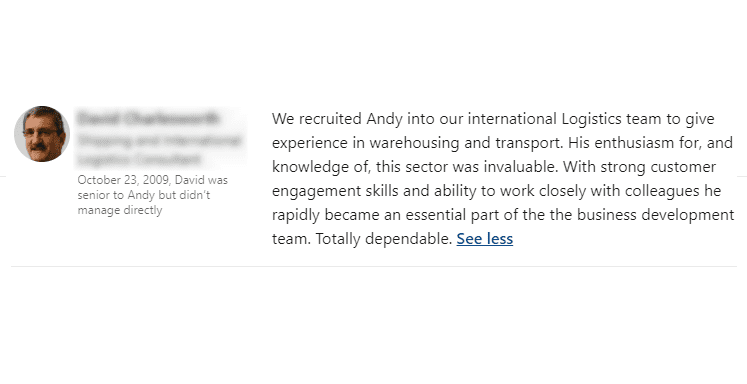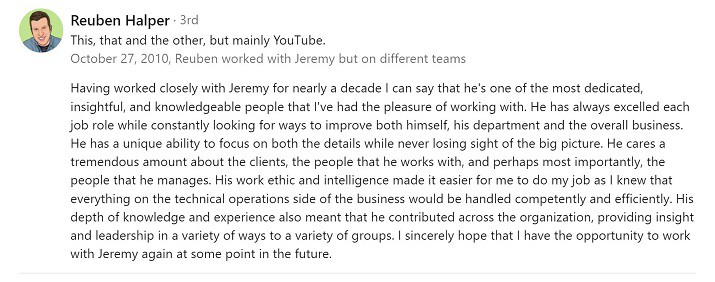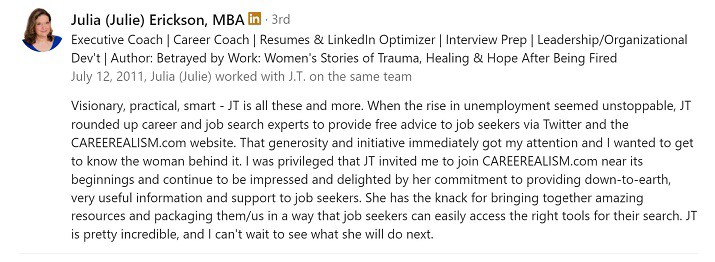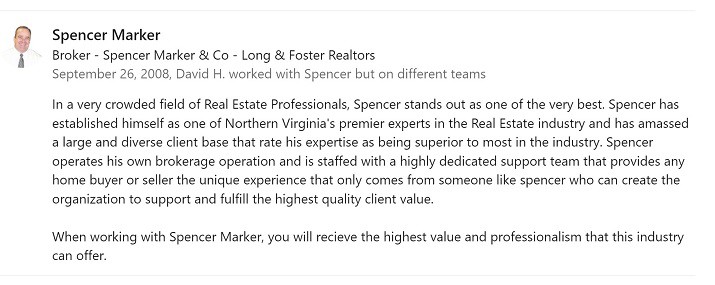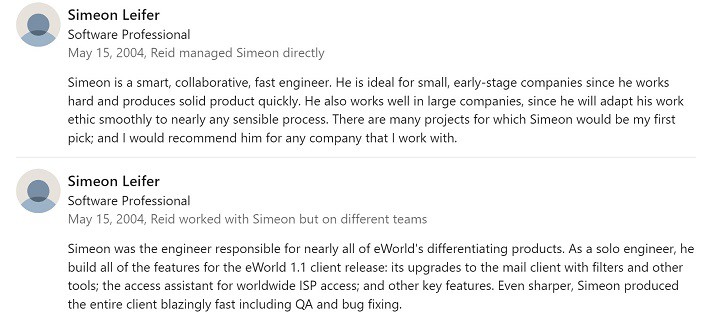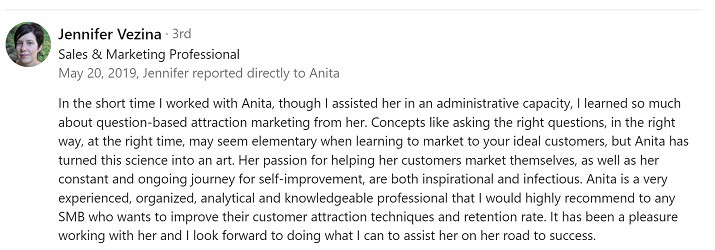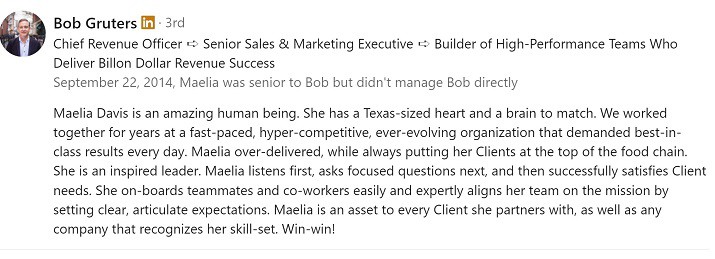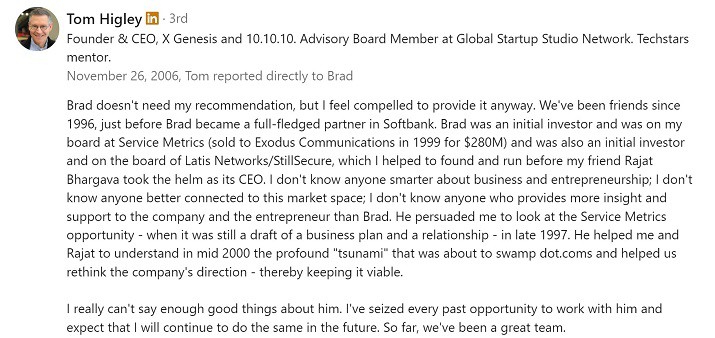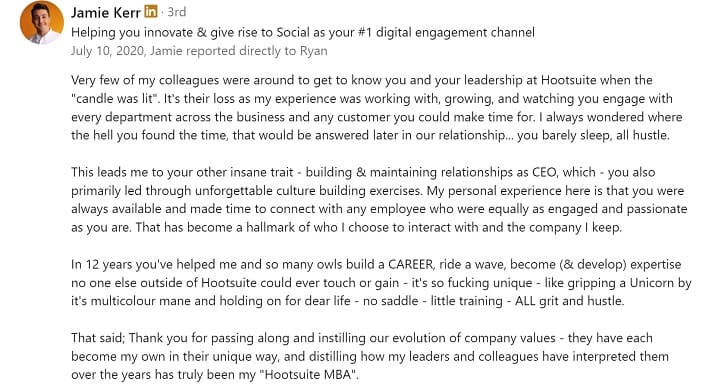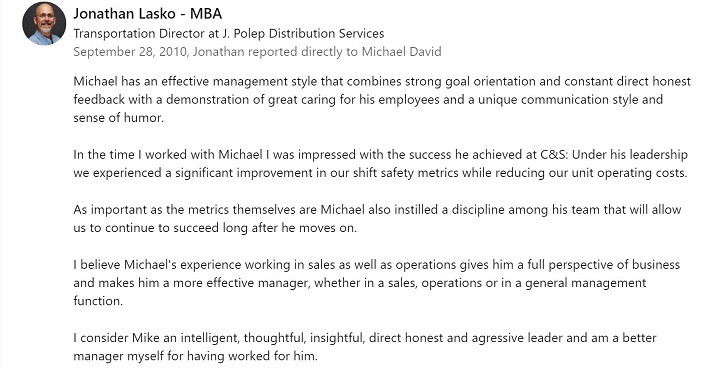People are reluctant about recruiting someone they don’t know with no proven track record. That is why LinkedIn, the world’s leading professional networking platform, has a recommendation feature. It allows those who have worked with you, as clients, bosses, or colleagues, to share their opinion of you and your skills.
When the recommendation is well written, it signals to those who visit your profile that they can trust you to execute their projects or handle specific job responsibilities.
The great thing about knowing how to write LinkedIn recommendations for others is it improves the chances of others doing the same for you.
So, in this article, we will explore why LinkedIn recommendations matter, and share some great examples to craft one on your own.
Why LinkedIn Recommendations Matter
LinkedIn has more than 756 million members. This means unless you have an established public profile, you need to craft your profile in a way that helps you stand out. Recommendations from other users are one way to achieve this.
One definitive reason a recommendation matters is it enhances your credibility as a professional and LinkedIn user.
Among those millions of users are generic-looking pages that look like fake accounts. Having recommendations from verifiable users, alongside other actions like an uploaded professional photo, give your account much-needed evidence of authenticity.
Another reason is recommendations are social proof of your capabilities. Not everyone will have their achievements and skills documented in newspapers or broadcasted on TV. However, recommendations from colleagues, clients, and bosses tell others that you are good at your job and can handle specific responsibilities.
There are also additional benefits such as —
- Improving your visibility to recruiters
- Appearing on other LinkedIn profiles
- Deepening your networking relationships
Unfortunately, crafting a recommendation for someone requires some intentionality and more skill than one would ordinarily expect. But that’s not to say it is difficult once you internalize the structural premise of an excellent recommendation.
Sample LinkedIn Recommendations to Inspire You
1. Describe their influence
This recommendation zeroes in on Sandra’s qualities, with words like “thorough” and “great eye for details.” With them, you get a sense of who she is and quickly recognize how that might be helpful to you as the reader.
More significantly, it shows that Sandra leaves a positive impact on those around her, establishing her value as a team member.
2. Focus on the details
Sometimes, drilling down on the soft and hard skills that make them great is the way to go. It allows you to show the depth of your working relationship, even if you weren’t necessarily friends.
Furthermore, detailed recommendations like this show you have the experience to have an accurate opinion on their capabilities.
3. Expatiate on the relationship
It is always better to be short. However, if you feel the need to write extensively, make it detailed and informative like this example. No fluff, just rolls of helpful information to the reader.
Like the former example, it establishes your authority on their opinion, using the length and breadth of your working relationship as evidence.
4. Concise and effective
With sentence after sentence, this recommendation takes the reader through the what, why, and who of their relationship with Shira.
It states the terms of their relationship right out of the gate and into their opinion of Shira immediately, before rounding off with how it impacted them and their work. A good example to follow if you want to be professional but relaxed.
5. Keeping it friendly
Your recommendations don’t always have to be stoic. It is possible to keep it light, as if you are talking to a friend, without veering outside professional boundaries.
The exciting ending also makes Mabel come across as a fun personality who loves being around other kinds of people. Extra points for saying more with less.
6. Suitable for seniors
Are you trying to write a recommendation for your boss? Maybe in hopes of getting one back? Writing matter of factly, like this, can be a simple balance between professional and personal.
This way, you remind the reader of their impressive credentials and showcase their personality without being overly familiar. It could also work for a colleague.
7. Very personable
Stuck on either side of the information about Jason’s qualifications are two sentences that zero in on the kind of person he is. It brings him alive, creating an image that lives on in the mind of the reader.
In describing their qualifications, this recommendation also uses keywords that jump out to any reader who might be interested in those services.
8. Authoritative and professional
An opening that shows why you are best equipped to recommend the recipient is fantastic. You quickly eradicate any doubts and are more likely to keep anyone who reads their profile engaged.
It also does a solid job of showing how their qualities have positively impacted the writer without being overly sentimental.
9. Well formatted
If you keep it short, you may not have to worry about formatting. However, if you intend to write a few paragraphs, making it easy to read by breaking them into short blocks of text is the way to go.
Additionally, this structure gives you room to share detailed insight without being tedious or exhausting.
10. State their impact
A LinkedIn recommendation is all about showing to others that a person is good at their job. Focusing exclusively on the positive effect you’ve enjoyed because of them is the making of an intelligent recommendation.
Not only do you boost the recipient’s confidence, but you also increase that of prospective clients in the person you are recommending all by sharing the measurable result they helped you accomplish.
11. Short and emphatic
If you prefer to keep things short, these recommendations are examples of doing so without implying less. The first sentence is bold and clear, stating important personal and professionally valuable qualities.
It finishes by deploying phrases that tell anyone reading that the person they are recommending will be an impressive addition to their team.
12. Balanced professional and personality insight
A good recommendation emphasizes the referral’s personal and professional attributes. A great recommendation finds a balance between both. Without drowning the reader in technical jargon or being too relaxed, you gain a solid idea of their expertise and who they are as a person.
Phrasing its recommendation in a way that appeals to different work dynamics is also a nice touch.
13. Establishes best qualities and ideal professional fit
Since you recommend them for a particular role, it is not out of place to share where you think they will fit. It shows you have tremendous confidence in their abilities and believe they are ready for the next step.
Stating the qualities fuelling your conviction is a nice way to wrap it up, although it doesn’t have to be in this order.
14. Tells a story
You have only a short moment to grab the audience’s attention. A recommendation that tells a story about your working relationship is a clever way to secure it. People love stories, and it gives further credibility to your opinion about their abilities.
However, you should avoid rambling. Keep every sentence focused on your journey together and the insights you’ve gained from it.
15. Make it exciting and friendly
It doesn’t have to be formal writing to be a persuasive LinkedIn recommendation. Writing in a conversational tone can be effective at keeping the audience’s attention.
Just make sure the content is informative, stating the challenge and how their efforts helped you resolve it. This is a good recommendation example for client-based relationships.
16. Great opening
Sometimes, all you need is an excellent opening. The one in this example delivers one in eleven words, authoritatively declaring that Peter is an exceptional talent. That alone is likely to make the reader more receptive to the rest of the recommendation and Peter.
The second half focuses on Peter’s personality before expressing their final approval. This example ticks every box.
17. Thorough professional and personality description
When the recipient deserves it, allow yourself to write a glowing recommendation about their professional and personality like this. It tells the audience that you have intimately experienced both sides of them, and thus, know if they are a good fit.
A recommendation like this is not only effective but will also be highly appreciated.
18. Explain their process
You don’t always have to say “they are the best” or any variation of the tired superlative. It is possible to pass the same message by laying out their process like this. It simultaneously reveals the breadth of their skills and their above-average abilities.
You don’t have to say you recommend them literally, either. Share how much value they brought you, and prospective clients get the message.
19. Keep it simple
No superlatives. No verbosity. Direct and packed. Sometimes simple is better. It appeals to a broader number of people and avoids misunderstandings. Still, it ticks most of the boxes for an eye-catching recommendation.
It states their relationship, highlights Chinaemerem’s standout qualities and personality. Then, it ends with a glowing recommendation about their intelligence.
20. Detailed and well written
Using up a significant portion of the 3,000 character limit can sometimes tell anyone who visits their profile that they are worth the effort. After all, recommendations can be much shorter, and most people still struggle with that.
Of course, it should avoid any fluff. Each sentence should improve the reader’s confidence in your opinion or pique their interest in the person you are recommending.
21. Emphasize their collaborative skills
In many office cultures, the ability to fit in is more important than raw expertise. If you are recommending them for a role that needs this, an example like this is helpful.
Focus entirely on their qualities in relation to their place in a team. This will give recruiters enough information to make a favorable decision.
22. State the personal impact
Remember that you are marketing a person with your recommendation. Very few things close a sale like evidence of value from real people. No need to roll out qualifications, just focus a good chunk of your text on how they have impacted you or your business.
However, do not forget to provide context to ensure your social signal is reaching the right people.
23. High praise and wholesome
It is always better to avoid the overly common “one of the best” phrase. But if you have to use it, doing it like this works. Consistently delivering high praise from one sentence to the other makes it exciting.
The ending also tells you that alongside being a talented consultant, Mark also has a great personality – enough for others to publicly praise him for their success.
24. Focus on their strengths
A mentor looking to write a recommendation for your mentee? Or writing for a lower-ranking staff member? There is a tendency to veer into condescension based on the nature of your relationship.
You can avoid this by focusing on their strengths without any comparisons. Keep it entirely about their professional and personal attributes, and you will have an excellent recommendation on your hands.
25. Keep it factual and direct
Writing recommendations for a boss or colleague can be tricky. Keeping everything straightforward and a matter of fact is one way to scrounge up an arrestive recommendation.
It is also informative, sharing enough insight to convince future employees of their potential value to their business. This template is also ambiguous enough to be reused for different persons.
26. Highlight their humanity
There is no one-size recommendation example fit for all types of roles. For jobs that involve human connection, emphasizing their humanity is a more influential direction.
It can be short like this one, or more detailed, perhaps as a story. Just keep it human.
27. Good balance between soft and hard skills
Another use of “one of the best” puts a beneficial spin on the cliche. It establishes its credibility and offers the reason why they rate Kobe highly. Then it dives into his personality, giving you a glimpse into the man beside his talent.
Notice how it uses a lot of words on his reliability? That’s because it is a crucial quality that employees look for in their profession.
28. Professional and informative
This example is a good example of the balance between being short and informative. Instead of repeating information already on LinkedIn, it focuses on their opinion of Melissa’s capabilities and performance over time.
The language is professional, and the reader comes away learning how she might provide value personally and professionally.
29. Keeping it direct and honest
This LinkedIn recommendation states the pain point that will most likely be shared by those looking to recruit Andy. This provides a connection that gives credence to the rest of his words.
It checks every relevant box for a wonderful recommendation the rest of the way, offering necessary insight into his expertise and who he is as a person. It is a helpful template to follow if you are writing one for a freelancer or a subordinate.
30. Show unrestrained enthusiasm
A professional recommendation does not have to lack emotion. Sharing your pleasure and excitement at your working relationship removes any doubt about the genuineness of your write-up, even more so when it is this detailed.
Find a way to weave their expert and personal qualities into it like this, and that’s an effective recommendation.
Best LinkedIn Recommendation Examples for Colleague
What if you want to write a recommendation letter on LinkedIn or have one written for you from a colleague’s perspective?
How do you go about that? The following examples can help you get a sense of what to include in a recommendation for a coworker and enable you to hit all the right notes when crafting your own.
1. Let some emotion seep in
If you’re going to write a great recommendation like this one, you need to make it personal. You’re not a robot, nor are you describing a robot, so you need to feed life into your recommendation.
Let the people see that you have or had a strong connection with this person in the time that you worked together and are deeply impressed by their work or personality. Describe how their presence impacted the work environment.
Mention the good deeds they did. Highlight the special, happy, or memorable moments you shared and how pleased you are to have worked with them or known them for as long as you did.
2. Shine a light on their results
As they say, action speaks louder than words. Rather than just going on and on about how great this coworker and they’re a treasure to any team, let people infer these for themselves by telling them exactly what the professional achieved while working with you.
How did they increase ROI? Which projects did they champion that helped grow the company’s investments or revenue? How many customers did they win within a given timeframe? People love success stories so why not shout your colleague’s successes from the virtual rooftop?
Hard facts, numbers, and examples will give more credence to their skills and experiences, and make them more attractive to potential recruiters.
3. Pile on the praise
It’s not flattering if it’s true, so don’t be hesitant to let the pride, respect, and admiration you feel for the coworker you’re writing about come through in your recommendation.
Use words and descriptions that will grab the reader’s attention and make them want to learn more about this awesome person.
After reading the LinkedIn recommendation you wrote for this colleague, viewers should come off with an understanding of just how amazing the person is and the kind of contribution they can bring to a work environment.
However, you don’t want to overdo it with superlatives, so choose words that demonstrate your belief and trust in this person without sounding over the top.
What was it like working with this person? How did you come to know them? What projects did you collaborate on? How long did your professional relationship last? These are all details that you can infuse into your LinkedIn recommendation for colleagues to make it more personable.
You don’t have to write a long, winding story with twists and turns. You can keep it short and sweet, just enough to provide much needed context about your working relationship with this person and show the audience that you’re indeed qualified to talk about the recommendee’s abilities.
5. Stick the landing with your starting phrase
A recommendation is like a sales pitch. You’re selling this person to the audience in the hopes that they’ll like the product and decide to go for it. What better way to grab their attention than to start with a dazzling comment as this Linkedin recommendation example deftly does?
It’s your opportunity to show off just how amazing this person is and how highly you regard them. Be specific and descriptive about what makes them great and try to stay away from generic words when talking them up.
6. Talk about what makes them stand out
Chances are you think this current or former colleague of yours is skilled, brilliant, and great at what they do, which is probably why you’re happy to recommend them to potential employers and clients. Instead of restarting these qualities and wasting characters, take a page from this colleague recommendation example and dive into specifics.
Show people what it is about them and their approach to work that makes them unique and impressive. Talk about their areas of expertise and the most important skills that they leverage while performing their job.
If you can think of one, write down a specific moment when this beloved colleague helped solve or resolve a challenging issue.
7. Focus on the job you’re recommending them for
Whether you’re recommending this colleague for their experiences and skills in a specific position or talking about their performance across several roles they’ve worked in, you can really sell your message by elucidating on the noteworthy aspects of their job.
This will provide readers with a clear picture of the person’s abilities and talents and how they can contribute to their lives or organizations if they choose to do business with the recommended person.
If you’re not sure which of their achievements or responsibilities to highlight, stick to the core elements of their job or reach out to them to see which parts they want spotlighted.
8. Maintain professionalism
Even if this colleague happens to also be your best friend in the world or your life partner, your LinkedIn recommendation is not the place to let loose and talk about how they smell or what their skin feels like. Keep it clean and formal.
Remember that the recommendation you give says something about you too and you don’t want it to reflect negatively on both of you. Put thought and care in the language you use.
Avoid unnecessary abbreviations and informal vocabulary. Don’t make statements that might be open to various interpretations because of their vagueness.
9. Make it about their impact
What makes this person different from all the other people you worked with? What responsibilities were they in charge of? What tasks or skills do they excel at and what makes this possible?
Are there any notable challenges or issues they found a solution for or helped the company scale through? Is there a subject or field that they’re regarded as a resource or expert on? How did their contributions impact the company?
Answering these questions in your recommendation can take it from boring to compelling in a heartbeat and give the person you’re recommending an edge in the eyes of recruiters and potential employers.
10. Close the deal
You want to give the audience a good reason why they should engage this person, hire them, or even do business with them and make it compelling. Summarize their performance and achievements and how they impacted the company they worked for or industry they work in.
Help the reader see what these achievements say about the person you’re recommending and why you believe they would make a difference in whatever professional setting they wind up in. To make the batter even tastier, try to draw a connection between their attributes and achievements.
Best Linkedin Recommendation Examples for Manager
Great managers are hard to come by, so if you’ve had the pleasure of working with one and are thinking about writing them a glowing recommendation on LinkedIn, here are some recommendation examples to inspire you.
1. Focus on their leadership skills
In this LinkedIn recommendation example for a manager, the recommender dives into all the many wonderful qualities that make the recommendee a great leader. It describes how they felt working with this manager and what they gained from the experience.
Apply the same tactic to your own recommendation. Think about the skills or traits the individual possesses that makes them an excellent manager. Focus on the attributes that are coveted and relevant to their job role and explain how they embody these respected qualities.
2. Lead with their industry expertise
The employment market is very competitive so people need something that differentiates them from all the other people out there. Keep that in mind when writing your recommendation for a manager and try to spotlight their areas of expertise.
Put their best skills and talents that will give them the most advantage at the forefront. Be very specific about what they excel in and what they can bring to any organization they find themselves in.
If you can, weave keywords that are highly relevant to their position or the services they offer into your recommendation.
3. Sprinkle in some personality
Employers and hiring managers are not just interested in a candidate that knows how to do their job adequately. They want to hire people who are great to work with, people who can fit perfectly into their work culture and bring a little extra something to the table.
Adding details that give the reader some insight into the personality of the person being recommended can sharpen up your recommendation and give them an edge in the job market.
Take some time to talk about the manager’s character. How well did they get along with other coworkers? How did they deal with pressure, conflicts, and challenges? How much did you enjoy working with them?
4. Keep it genuine and personal
If you’re going to write a recommendation for a manager, you need to make sure it’s the real deal. You shouldn’t have to lie or exaggerate to get your point across and effectively sell the person you’re recommending to the reader.
It’s better to not write a recommendation at all than to write one that’s not sincere or an accurate representation of the person. Feel free to take the readers on a journey and explain how you got to meet this person and how important they are to you on a personal and professional level.
5. Highlight soft skills
Anyone can pick up hard skills if they take out the time and make the effort to learn it. Soft skills, however, are much harder to pick up if it’s already coded into a person’s personality.
Things like the ability to communicate, be calm and articulate under pressure, be patient when things aren’t exactly going your way, accepting and responding to criticism without taking it personally are really important soft skills that the workplace needs to thrive.
Make sure to bring those precious, hard-to-acquire traits that the recommended possesses to the reader’s attention.
6. Show off their competencies
Instead of giving a broad overview of the manager’s best attributes, zoom in on the points or areas where you think they shine best and base your recommendation on them.
It could be that they’re good at motivating others, resolving conflicts, or managing crisis situations and helping teams and members get through them. Maybe they excel at making sure projects get done excellently and completed on time or they’re really good at creating effective structures to improve workflow and productivity.
Traits like this are highly sought after and could make the recommendee look more appealing in the eyes of recruiters, clients, and future employers.
7. Talk about what you learned from them
The best managers are those who you can always learn something from directly or indirectly. They don’t hoard knowledge or experiences and they’re always willing to lend a helping hand when you need it.
Don’t feel like you have to go into too much detail if you’re not up for it, but you should share enough to give the reader an idea of how impactful and helpful the manager has been in your life and that of other coworkers.
8. Sneak in affirmations
The point of writing a Linkedin recommendation for a manager is to get people to reach out to them after reading your post and offer them a job or a chance to collaborate. Take that extra step and assure readers that can trust your word by adding a call to action that strongly encourages them to try this candidate out.
As you can see from the example above, it doesn’t have to be anything elaborate, a simple statement saying that any company would be lucky to hire them or something along those lines would suffice.
9. Emphasize essential characteristics
This recommendation plays up the manager’s ability to motivate and inspire their team members, see the potential in people, and guide them towards professional growth and success, all attributes that anyone would want when thinking about hiring for a managerial position.
10. Describe how they impacted your career
By illustrating how much you’ve grown while working under the management you’re recommending, you’re painting them in a good light. People will read this and marvel at how great the candidate and the impact the manager could have on their own workers and organization if they choose to hire them.
Final Thoughts
LinkedIn recommendations are valuable if you are considering boosting your profile. They show that you recognize and appreciate the work of others and social proof of your expertise. But writing them doesn’t come easily to many people.
However, following the tips we talked about will help you write genuine, engaging, and influential recommendations.
And as tempting as it might seem, don’t just copy these samples. Instead, study them and several other examples on the internet for inspiration.

Scott L. Macarthur is a marketing consultant and an online author. He is mostly engaged in providing his expertise to startups and SMBs. He is also an author on TheNextWeb.

